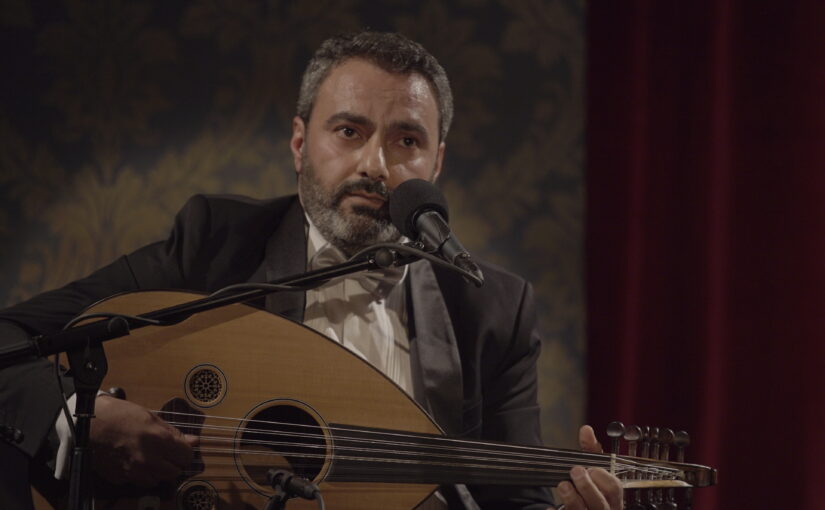OBJECTIVES
The participants will be introduced to the structure of the most famous and used Maqams (scales), the most common tonalities of these Maqams, modulations between Maqams, and a brief idea about some rare Maqams. They will also be introduced to the most common Rhythms in Arabic music. Different Rhythms from different Arabic countries will be covered.
Introduction to different instrumental and vocal Forms in Arabic Music, to as many Instruments as possible from different Arabic cultures and to many folk and traditional songs and pieces as well as composed ones.
The participants will be lectured briefly about the History of Arabic music and its origins, sources, and roots. A brief history of different countries (Geography) and areas like the Gulf (Kuwait, KSA, UAE, and Bahrain), Middle East (Lebanon, Syria, Jordan, and Palestine), Egypt, and North Africa (Tunisia, Morocco).
PEDAGOLOGICAL CONTENT
pedagological tools :
- The teacher will be lecturing about historical and geographical topics.
- The teacher will play different videos about instruments from different Arabic countries.
- The teacher will play different MP3s to introduce different styles and forms of Arabic music.
- The teacher will perform on OUD all the Maqams under study, modulations between Maqams, instrumental and vocal forms under study, and the special quarter tone intervals in the Arabic Maqams.
- The teacher will play some Frame Drum to show the participants and accompany them during the intended/prepared exercises.
- The teacher will distribute music sheets covering most of the examples under study.
GENeral notes & hints :
- Keeping in mind that every single topic that will be handled is a field of study of its own, the teacher will focus on Maqams and Rhythms more than he will dive into history, geography, Forms, and Instruments.
- Due to the language barrier, we will focus on singing the tunes under study by using vowels like (Ahhh or Laaaa…… etc) rather than wasting time on trying to pronounce correctly the original lyrics of these songs.
- Arabic Maqams that have quarter tones can be performed on fretless instruments like Oud, Violin, Viola, Cello, or fretless guitar. Other Maqams that contain Tones and Semitones only (like Major and minor and similar Arabic Maqams) can be performed on other Western instruments like the flute, clarinet, piano, and so on.
Participants must know in advance this limitation to some Western instruments which might lead to getting the information theoretically rather than practically.
- The five hours of each day of the master class will include different objectives by using different tools and approaches so that we make sure that the planned program is divided equally on the five days and at the same time each day/session has its challenge.
CONDITION OF PARTICIPATION
This formation is directed to both singers and instrumentalists of all levels.
REGISTER NOW
>> ON-LINE REGISTRATION <<
>> RATES AND REGISTRATION PROCEDURE <<
BIOGRAPHY
Sometimes traditional Arabic, sometimes classical, close to flamenco with Afro-Cuban sonority or funk, Ziad El Ahmadie is part of “unclassified artist”. So to keep things simple, we tidy it in the oriental fusion. He is Oud player, singer and composer.
His career started in 1992 with the founding of the “Chromatic Band”. He gave concerts and recitals, beginning with the prestigious universities in Beirut and then in the following countries (Jordan, Syria, Egypt, Sharjah, Abu Dhabi, Tunisia, Morocco, France, Germany, Italy, Spain, Switzerland, Belgium and USA).
With three albums (“Bilbal” in 2003, “Beyond Traditions” in 2006 and “Silent Wave” in 2009) to his credit, Ziad El Ahmadie loves mixtures. In his three albums, he composed tunes where we can listen to Arabic rooted melodies but at the same time mingled and mixed with other cultural elements like instrumentation, rhythms, harmony and orchestration.
In 2004, he collaborated with the Swiss composer Robert Clerc and played solo Oud in two of Robert’s Operas “A l’ombre du grand arbre”, and “OperAdon” in 2008 where he also participated as co-composer and Oud player.
Since 2006 till present time, he composed music for many TV series (18 Series sound tracks). He also composed music for films (10 films). He also made sound designs and composed music for plays since he was student at Lebanese American University (10 plays).
Close to education, Ziad El Ahmadie was the head of Drama and Music departments in Le Lycee National (1999 till 2014) where he established his choir and participated with them in many local festivals and won with them many competitions in Lebanon. At present, he is an instructor at the Lebanese International University (LIU) teaching music courses since 2013. In LIU, he is lecturing in music theory as an elective course and in music methods for home class teachers for education majored students.
